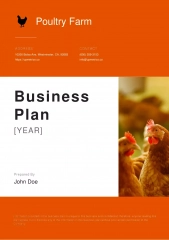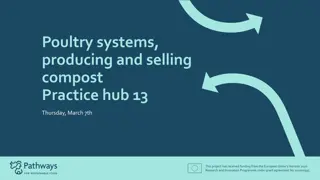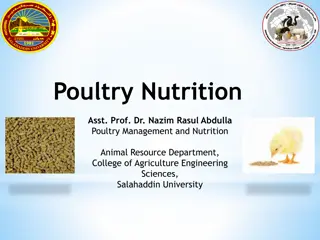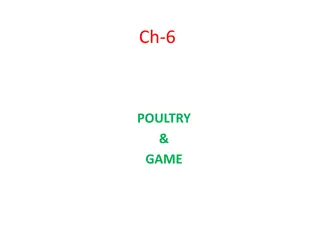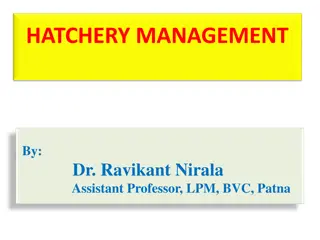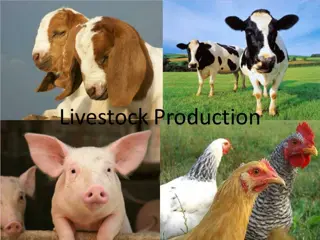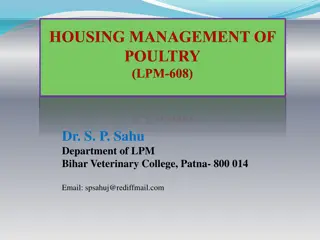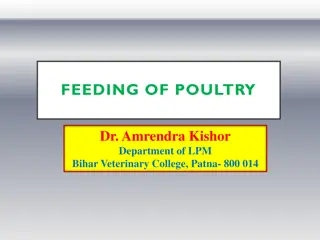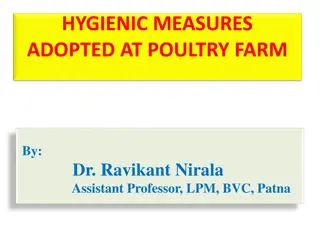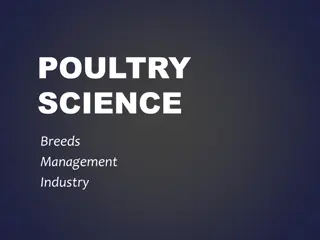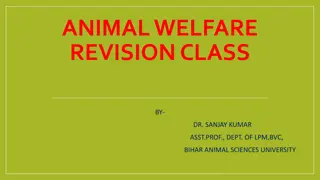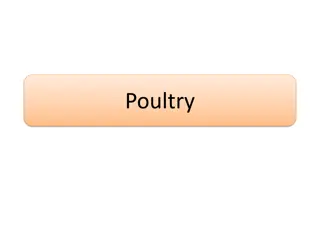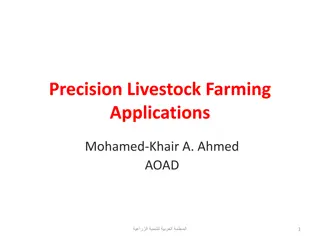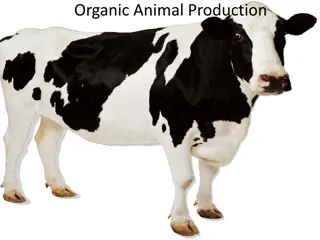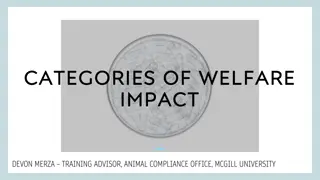Animal Welfare in Poultry Farming: Ensuring Health and Well-being
Explore the essential aspects of animal welfare in poultry farming, focusing on promoting the physical and mental well-being of birds during health emergencies. Learn about ethical responsibilities, the Five Freedoms framework, and practical guidelines for ensuring freedom from hunger, discomfort, pain, injury, disease, and fear. Proper care practices, such as monitoring food and water intake, maintaining clean living conditions, and providing opportunities for normal behavior expression, are highlighted. Enhance your understanding of poultry welfare to improve animal care standards in the industry.
Download Presentation

Please find below an Image/Link to download the presentation.
The content on the website is provided AS IS for your information and personal use only. It may not be sold, licensed, or shared on other websites without obtaining consent from the author. Download presentation by click this link. If you encounter any issues during the download, it is possible that the publisher has removed the file from their server.
E N D
Presentation Transcript
Animal Welfare During Animal Health Emergencies Poultry
Animal Welfare Ethical responsibility Ensuring animal well being Physical and mental Consideration of Health Behavior Biological function Continuously evaluate Animal Welfare: Poultry Just in Time Training
The Five Freedoms Define ideal states of welfare Framework for analysis of welfare Freedom from hunger and thirst Freedom from discomfort Freedom from pain, injury, and disease Freedom to express normal behavior Freedom from fear and distress Animal Welfare: Poultry Just in Time Training
Freedom from Hunger and Thirst Daily requirements vary with species and age Monitor feed/water intake Water (per 100 birds per day) Feed (per 100 birds per day) Layer Chickens 5 gallons 17 pounds Broiler Chickens 5 gallons 10 pounds Turkeys 12 gallons 40 pounds Animal Welfare: Poultry Just in Time Training
Freedom from Discomfort Appropriately sized confinement space Indoor housing Protection from elements Ventilation Temperature Clean litter Wood shavings, paper by-products, hulls, ground corncobs, chopped straw Avoid overcrowding Waste Management Animal Welfare: Poultry Just in Time Training
Freedom from Pain, Injury, Disease Examine upon entry/exit Illness Injury Nutritional well-being Treat appropriately Medical, surgical Euthanasia Monitor May have delay in showing signs Animal Welfare: Poultry Just in Time Training
Freedom to Express Normal Behavior Flock animals Hierarchy Natural behavior Preening, dust bathing Foraging Nesting, perching Separate birds by Farm of origin Pre-established groups Animal Welfare: Poultry Just in Time Training
Freedom from Fear and Distress Humane handling Experienced handlers Humane euthanasia Avoid startling or sudden movements Pile ups can cause injury or suffocation of birds on the bottom Safe transport Avoid overcrowding Animal Welfare: Poultry Just in Time Training
Responders: Mental Health and Animals Response stress Can affect responder mental health May affect animal welfare Responder apathy Responder fatigue Uncompleted tasks Carelessness of tasks Forgetting overall welfare needs Animal Welfare: Poultry Just in Time Training
Resources American Veterinary Medical Association The veterinarian s role in animal welfare www.avma.org/products/animal_welfare/welfare.pdf AVMA Guidelines on Euthanasia www.avma.org/issues/animal_welfare/euthanasia.pdf USDA Animal Welfare Information Center http://awic.nal.usda.gov OIE Animal Welfare Guidelines Terrestrial Animal Health Code www.oie.int American College of Animal Welfare www.acaw.org Animal Welfare: Poultry Just in Time Training
Acknowledgments Development of this presentation was by the Center for Food Security and Public Health at Iowa State University through funding from the Multi-State Partnership for Security in Agriculture Authors: Abbey Smith, BS; Glenda Dvorak, DVM, MPH, DACVPM


